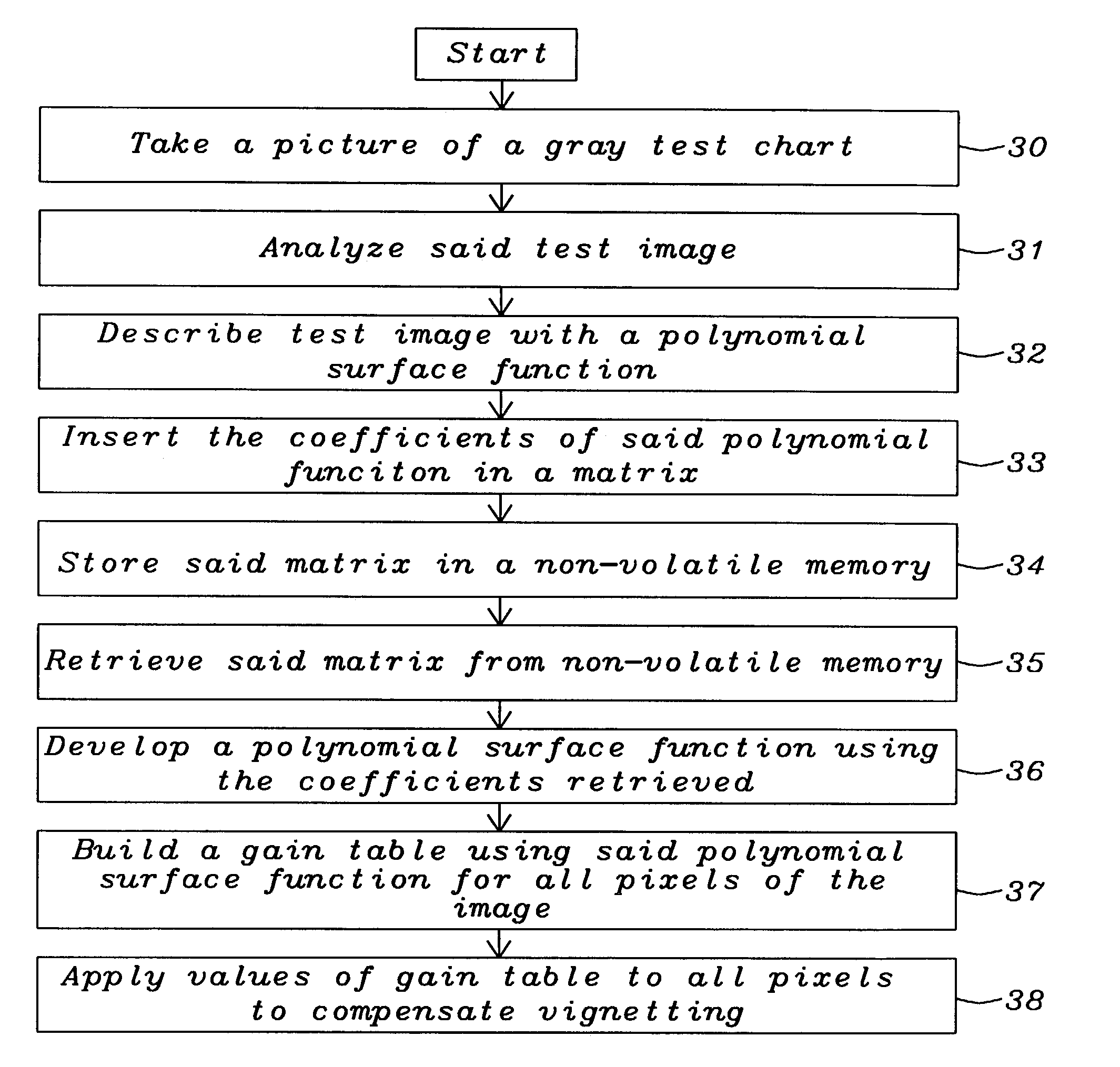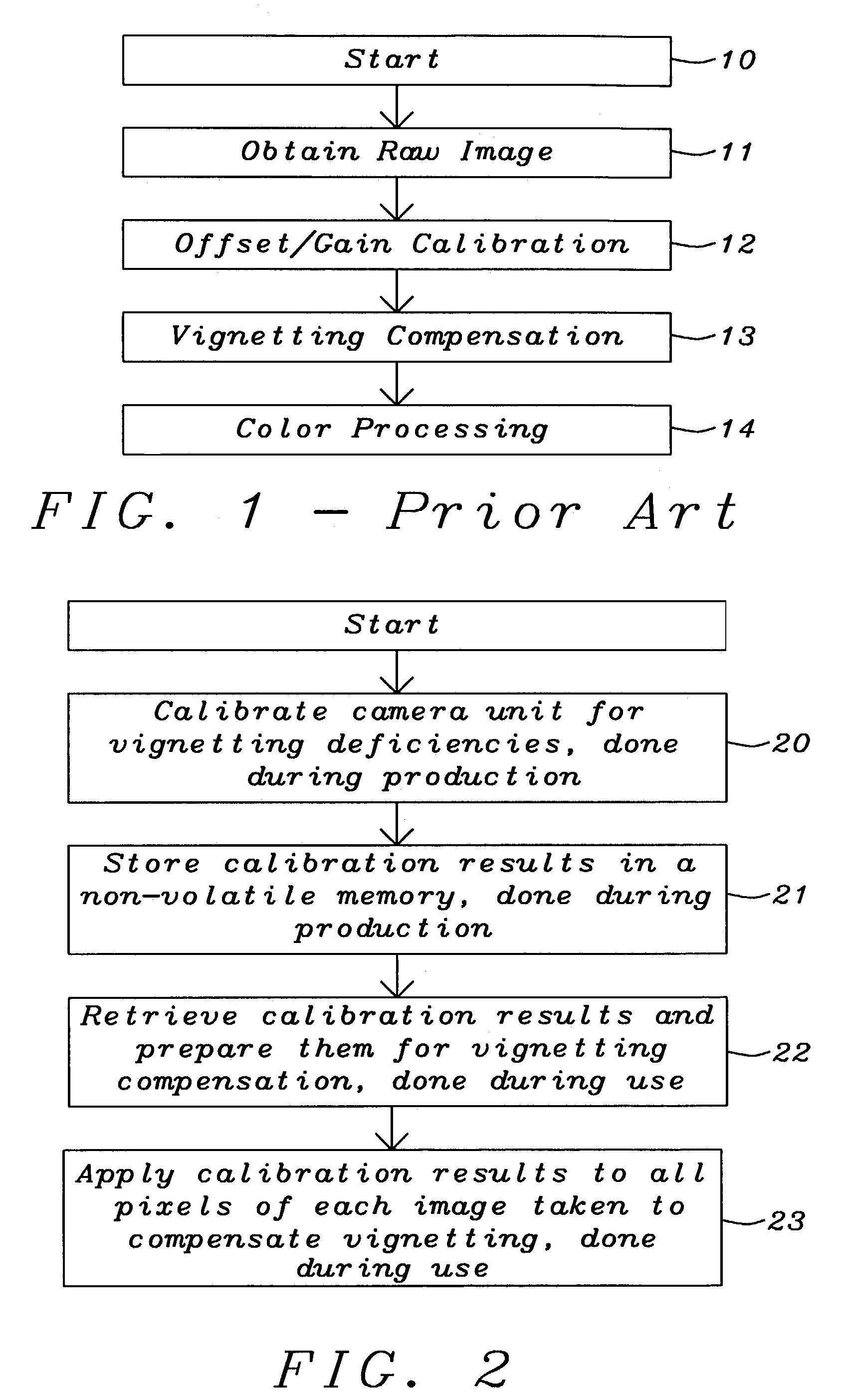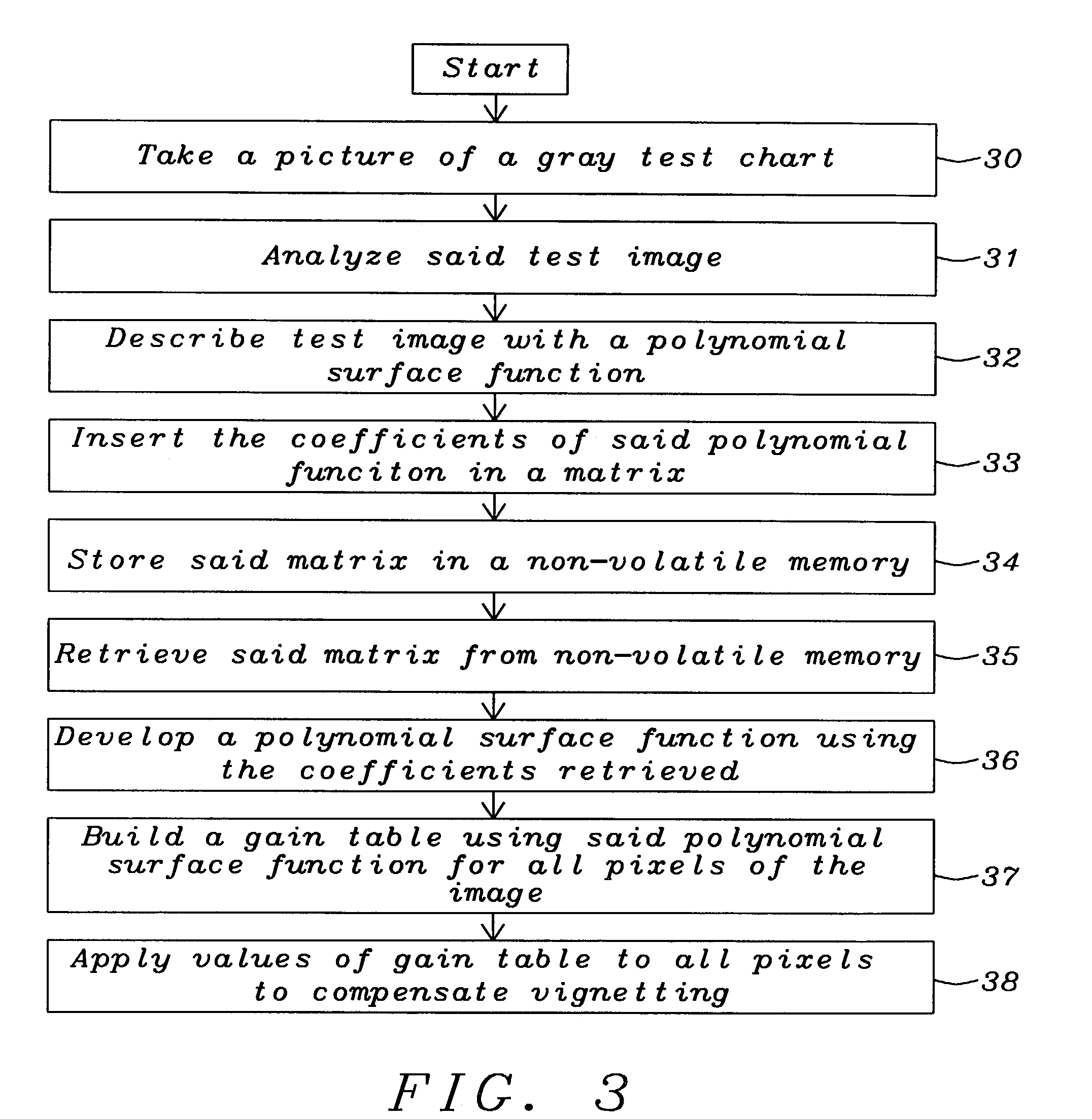Vignetting compensation
a compensation and vignetting technology, applied in the field of image processing, can solve the problems of unworkable and inacceptable last case, unsatisfactory, and all camera lenses suffering, more or less, of these optical phenomena, and use of typically complex optical systems
- Summary
- Abstract
- Description
- Claims
- Application Information
AI Technical Summary
Problems solved by technology
Method used
Image
Examples
Embodiment Construction
[0020]The preferred embodiments disclose a method to compensate the vignetting of digital cameras allowing the usage of a cheaper lens with high image quality in respect of vignetting.
[0021]FIG. 2 describes the general method of a preferred embodiment to compensate vignetting. Said method comprises two phases. In the first phase the camera unit is calibrated. Said calibration is performed only once during production of a camera unit and it comprises two major steps 20 and 21. In step 20 the camera unit is calibrated for vignetting deficiencies and in step 21 the result of said calibration is stored in a non-volatile memory of the camera. The second phase comprises the application of the calibration results to all pixels of each image taken. In step 22 said calibration results are retrieved from said non-volatile memory and prepared to be applied to each image taken. In step 23 said calibration data prepared are applied to all pixels of each image taken to compensate vignetting.
[0022...
PUM
 Login to View More
Login to View More Abstract
Description
Claims
Application Information
 Login to View More
Login to View More - R&D
- Intellectual Property
- Life Sciences
- Materials
- Tech Scout
- Unparalleled Data Quality
- Higher Quality Content
- 60% Fewer Hallucinations
Browse by: Latest US Patents, China's latest patents, Technical Efficacy Thesaurus, Application Domain, Technology Topic, Popular Technical Reports.
© 2025 PatSnap. All rights reserved.Legal|Privacy policy|Modern Slavery Act Transparency Statement|Sitemap|About US| Contact US: help@patsnap.com



